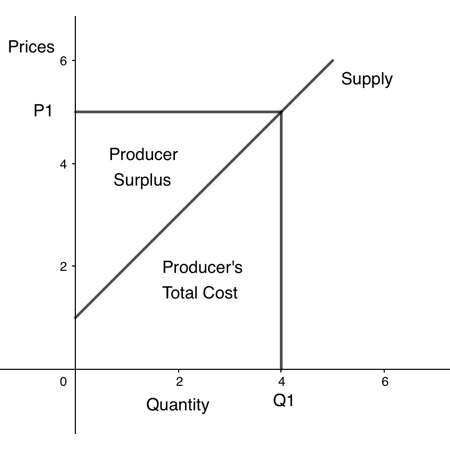
How to Properly Make a Grindstone: Essential Steps for 2025 Success
In the world of tool sharpening, learning how to make a grindstone can be a valuable skill, especially for DIY enthusiasts and hobbyists. Grindstones have been a fundamental tool used for centuries to sharpen various blades, tools, and implements. Whether you're maintaining your manual tools or embarking on a home improvement project, a well-made grindstone can significantly increase your workflow efficiency and deliver superior sharpening results.
In this guide, we will explore the essential steps necessary for crafting a high-quality grindstone, including selecting the right materials, assembling the necessary parts, and understanding different grinding methods. We will also touch on the benefits and uses of grindstones, maintenance tips to prolong their life, and modern innovations that enhance their performance. By the end of this article, you will have the knowledge to create a practical grindstone suited for your needs.
Key takeaways include:
- The importance of grindstone materials and proper construction techniques.
- A comprehensive approach to grindstone maintenance for optimal performance.
- Tips for effectively using a grindstone to sharpen tools.
Now, let's dive into the essential elements of constructing and maintaining a grindstone.

Essential Components You Need to Create a Grindstone
Building a grindstone requires understanding its basic components. Here's a closer look:
Key Grindstone Parts
The main parts of a grindstone include the grinding wheel, axle, frame, and base. Each part serves a specific function:
- Grinding Wheel: The heart of the grindstone, usually made of stone, ceramic, or metal. This is where the actual grinding occurs.
- Axle: The rotating shaft that drives the grinding wheel. It must be sturdy to withstand the friction and pressure.
- Frame: The structure that holds the grindstone components together.
- Base: A solid, level surface that stabilizes the grindstone during use.
Building on these fundamentals, you will ensure your grindstone operates safely and effectively. This naturally leads us to the materials needed for construction.
Choosing the Right Grindstone Material
Selecting the appropriate material for your grindstone is critical. Common materials include:
- Natural Stone: Provides excellent durability and performance, but can be expensive.
- Ceramic: Often used for finer finishes and is usually available at a lower cost.
- Metal Alloys: Known for durability and can last longer than traditional stones.
Each material has its advantages and disadvantages, impacting the performance and longevity of your grindstone. Choose one that aligns with your sharpening needs.
Understanding Grindstone Sizes
Grindstone sizes can vary significantly, affecting both your projects and efficiency. Common sizes include:
- Small Grindstones: Ideal for home use and sharpening small tools.
- Medium Grindstones: Suitable for most household projects, providing a balance between size and functionality.
- Large Grindstones: Designed for larger tools and professional settings.
It's important to consider the types of tools you'll primarily be sharpening when selecting the size of your grindstone.
Steps for Assembling Your Grindstone
Once you have your materials and components ready, it’s time to assemble your grindstone. This guide outlines the process, ensuring you achieve a sturdy and effective tool for sharpening.
Build Your Grindstone Frame
Begin by constructing the frame. A well-constructed frame will provide stability and allow for adjustments:
- Use strong wood or metal to ensure durability.
- Ensure the height is appropriate for comfortable use.
With these basics established, let's move on to mounting the grinding wheel.
Mounting the Grinding Wheel and Axle
The grinding wheel must be securely mounted on the axle. Here's how to do it:
- Align the wheel with the axle, securing it using bolts or clamps.
- Ensure it seats properly to avoid wobbling during operation.
This will connect the grinding wheel to the frame securely, allowing for smooth rotations. Following this, it’s time to focus on the base and finishing touches.
Setting Up the Base
A stable base is essential for effective grinding. Here’s how to create it:
- Choose a heavy material like concrete or thick wood.
- Attach the frame to the base using screws or brackets for added stability.
This solid foundation will ensure the grindstone remains stationary, allowing for precision during use. With the main components assembled, you’re now ready to focus on polishing and final adjustments.

Grinding Techniques: How to Use Your Grindstone Effectively
After successfully constructing your grindstone, understanding how to use it effectively is key to maximizing its benefits.
Sharpening Tools with a Grindstone
When using your grindstone, the sharpening technique varies based on the tool being sharpened:
- For Blades: Maintain a consistent angle against the stone while applying gentle pressure.
- For Chisels: Use a back-and-forth motion to ensure even sharpening.
- For Axes: Use long strokes, allowing the grindstone to grind evenly along the blade.
This practice will ensure you achieve a sharp edge while minimizing wear on the stone.
Maintaining Your Grindstone
Regular maintenance will enhance the durability and effectiveness of your grindstone:
- Clean the grinding wheel after each use to prevent build-up.
- Regularly check for any signs of damage and make necessary repairs.
- Store your grindstone in a dry, protected area to prevent moisture damage.
Keeping your grindstone in top condition allows for optimal performance and extends its lifespan.
Grindstone Safety Tips
Safety is paramount when using a grindstone. Here are essential safety tips to follow:
- Wear safety goggles to protect your eyes from debris.
- Keep your hands clear of the grinding wheel.
- Ensure proper ventilation if working indoors to prevent dust inhalation.
Prioritizing safety prevents accidents and ensures a smooth grinding process, leading into our final thoughts on grindstone projects.
Grindstone Alternatives and Innovations
As technology advances, many alternatives to traditional grindstones are emerging. Understanding these can broaden your sharpening toolkit.
Exploring Portable Grinding Solutions
Compact and portable grindstones are gaining popularity due to their convenience. These systems often offer:
- Lightweight designs for easy transportation.
- Adjustable sharpening angles for versatile use.
Portable options are ideal for outdoor settings or for those who need a grindstone on the go.
Innovative Grinding Techniques
Modern grindstone designs now include features such as:
- Better material choices that offer improved sharpness.
- Technology-enhanced settings for precision grinding.
Staying updated on these advancements can significantly impact your grinding techniques.
Traditional vs. Modern Grindstones
While traditional grindstones have their merit, modern systems often provide efficiency and versatility that can be beneficial:
- Assessing the pros and cons of traditional versus modern is essential.
- Choosing the right type based on your specific needs will yield better results.
This analysis broadens your perspective on the context of grindstones in today's market, rounding out our guide.
Q&A: Common Grindstone Queries Answered
What materials are best for making a grindstone?
The best materials include natural stones, ceramics, and metal alloys, each offering different benefits in terms of durability and performance.
How can I maintain my grindstone effectively?
Regular cleaning, timely repairs, and proper storage are essential to maintaining grindstone performance.
What safety measures should I follow when using a grindstone?
Always wear safety goggles, keep hands clear from the grinding wheel, and ensure adequate ventilation during use.
Can I use a grindstone for other purposes apart from sharpening?
Yes, grindstones can be utilized for shaping materials and creating finishes on various tools and items.
Are there portable alternatives to traditional grindstones?
Portable grinding solutions are available that offer convenient features and versatility, ideal for those on the move.
By understanding the crucial steps in crafting, using, and maintaining a grindstone, anyone can benefit substantially from this essential tool.